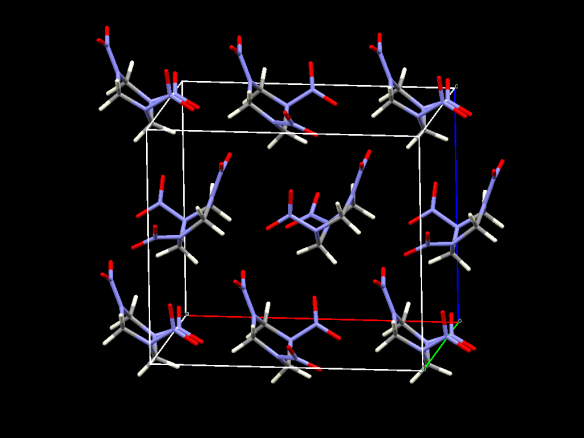Danger danger! A high-pressure explosive – γ RDX
What does it look like?

Image generated by the Mercury crystal structure visualisation software http://www.ccdc.cam.ac.uk/Solutions/CSDSystem/Pages/Mercury.aspx
What is it?
RDX (which stands for Research Department Explosive) or its chemical name cyclotrimethylene-trinitramine was first discovered in 1898 in Germany and developed in the early 19th century to be a more powerful explosive than TNT. How an explosive performs is dependent on many things, but one of these is its crystal structure and how the molecules fit together. Many explosives are small molecules, similar to pharmaceutical molecules like aspirin, and hence can also can form a number of crystal structures (polymorphs) under different conditions of pressure and temperature.
γ RDX is a high pressure form of RDX, that only exists at pressures greater than 4 GPa. To find this structure, these researchers used a couple of high-pressure devices, including a diamond anvil cell to compress their sample. These types of high-pressure devices are designed to allow crystallographic studies, so that crystal structures of these extreme materials can be determined.
Where did the structure come from?
The structure of γ-RDX was discovered by Davidson et al. and is #7201777 in the Crystallography Open Database.






